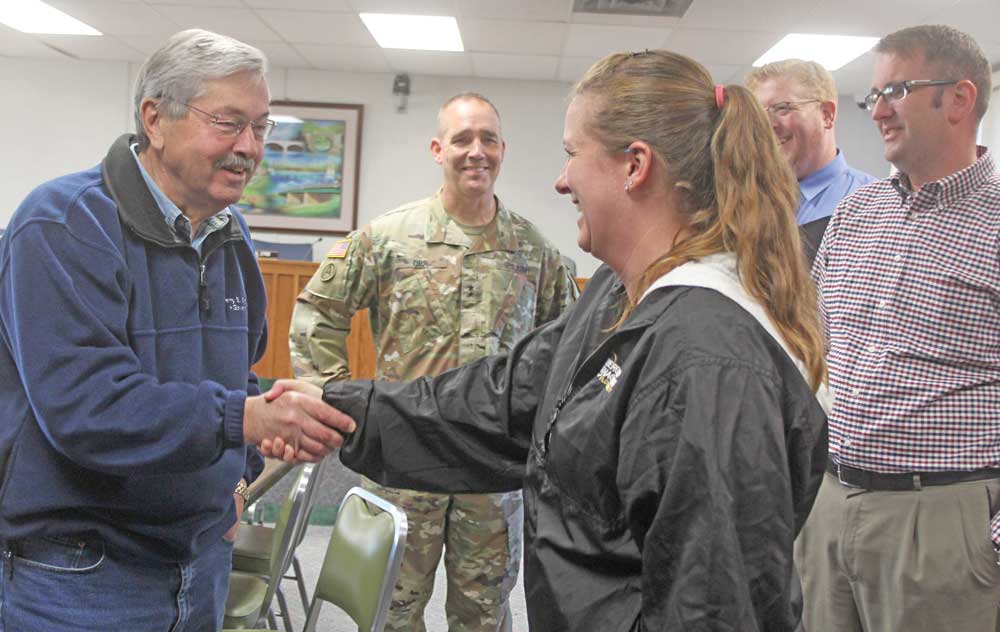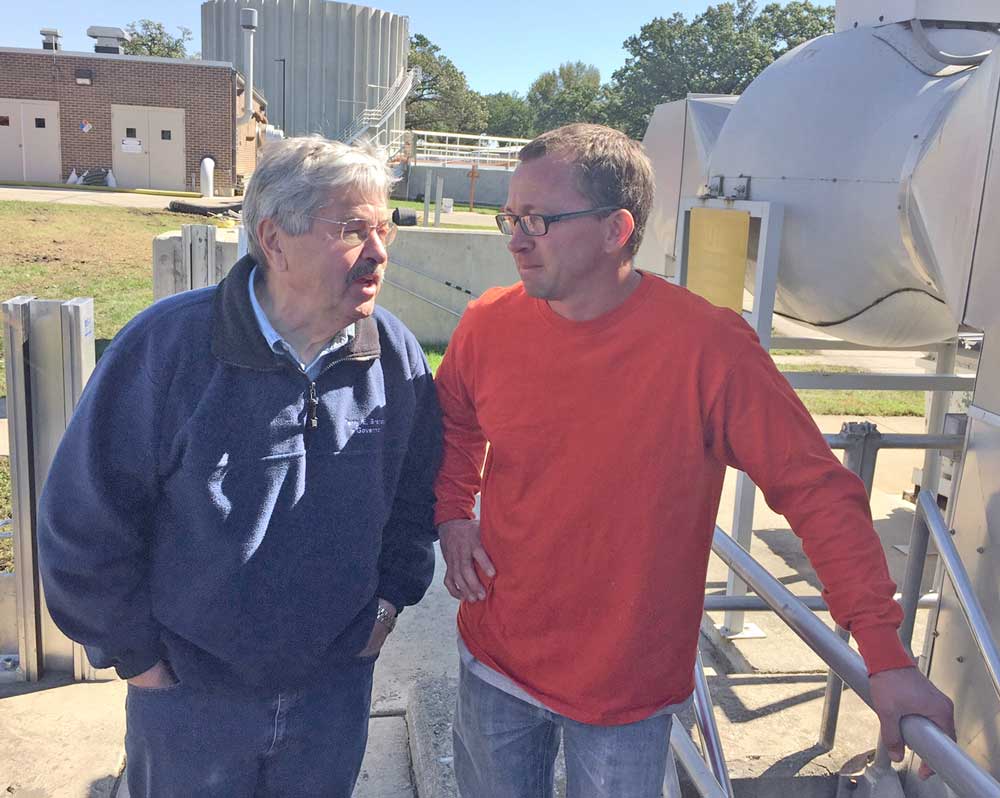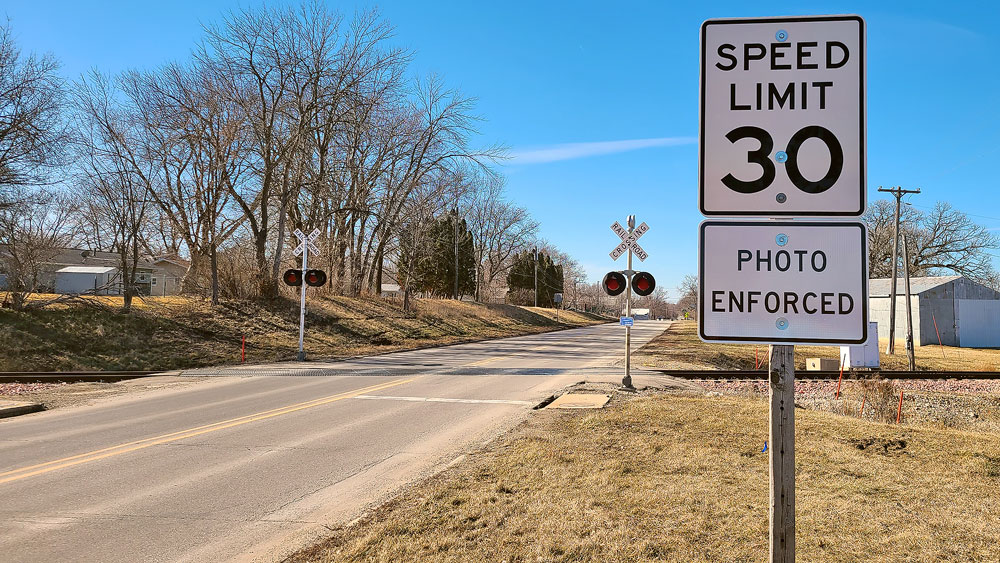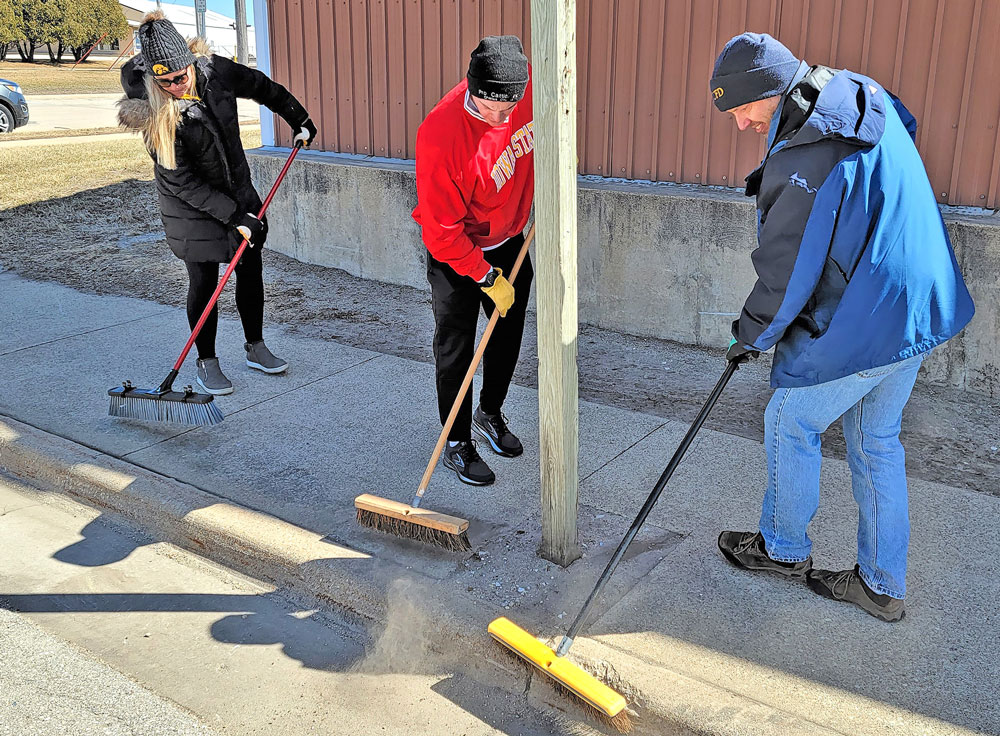Gov. Branstad visits Floyd County in tour of flooded Iowa
By Kate Hayden | khayden@charlescitypress.com
Governor Terry Branstad and Lt. Governor Kim Reynolds stopped by the Charles City Hall on Monday at the start of a week of assessing flood damage across the state.
“I learned a long time ago when you have a disaster like this, it’s important that chief executive in the state get there,” Gov. Branstad said to city and county officials gathered in the City Council chambers.
The governor briefly made a stop at the Charles City Wastewater Treatment Plant but did not tour another site in Charles City.
Floyd County was one of the first 13 counties to receive a disaster proclamation from the governor, with four more counties added on Monday, Gov. Branstad said. Six other counties including Chickasaw had already been under a previous state proclamation after floods swept in about a month ago, resulting in one Chickasaw fatality.
The governor toured Charles City and Greene on Monday, encouraging emergency response officials and citizens to be meticulous in documenting damages for federal aid. On Wednesday Gov. Branstad expects to continue his tour, visiting Cedar Rapids and potentially Manchester to view the damage left from floodwater levels second only to 2008 records.
“If we meet a certain threshold then we’ll request a presidential declaration, which will get us federal dollars to help as well,” Gov. Branstad said. “You’ve been through that before, as you know, in 2008 where you had a really devastating situation.”
Surveyors will arrive in Charles City on Monday and Tuesday to begin the assessment process. That may take about a week. Should Floyd County reach the required threshold of $4.3 million, the request will reach President Barack Obama’s office and FEMA.
“The better the documentation, the more likely we are to get the presidential declaration,” Gov. Branstad said.
Charles City had an estimated 100-150 homes damaged from the initial storm surge, City Administrator Steve Diers said, but all homes were affected by the temporary loss of the wastewater treatment plant. About 25 households were told to evacuate their property.
“We’re a town of 7,700, we’ve got some outlying areas that are not in city limits connected to our wastewater system, you get to 8,000 pretty fast,” Diers said.
In the city of Floyd, three houses experienced sewer backup and two individuals called with other damages, Floyd County Emergency Management Director Lezlie Weber said. Marble Rock had tree damage and basement seepage; 12 Nora Springs residents contacted City Hall with water damage to homes, and 20 reported related water damage. A few Nora Springs streets were also washed out.
Rockford reported 10 homes with water in the basement and one home with river water damage. The wastewater pumps were also inundated, Weber said, but an auxiliary pump was added to prevent stoppage of pumping in Rockford. Rudd had one call of basement damage, and about 20 calls reporting water in the basement with no major damage.
There is no report of damage done to the Nora Springs dam, Weber said, although there were multiple calls of concern.
Floyd County experienced significant crop damage from wind and flash flooding, Gov. Branstad heard from Rep. Todd Prichard.
For lower-income households affected by damage, the state-run Disaster Assistance Grant Program can provide up to $5,000 in financial assistance immediately, Gov. Branstad added. Floyd and Chickasaw counties’ application deadline is Nov. 7.
This was the first instance since 2011 that Gov. Branstad called on the National Guard for assistance in a flood event.
“We really want to be your partners,” Gov. Branstad said.
Thanks to the community, Mayor Jim Erb said, emergency flood operations have gone smoothly and efficiently, but Erb said some of that preparation was thanks to experience and hindsight.
“I think it has gone pretty well, really,” Erb told Gov. Branstad and Lt. Gov. Reynolds. “Of course, we’re getting better at it.”
“It’s pretty clear we’re experiencing a lot of high water too often, too much, too quickly,” he added. “I’ve been mayor for 20 years, and a majority of the high water events in my time.”
During the briefing, Gov. Branstad attributed some flood mitigation success to projects like the Iowa Conservation Reserve Enhancement Program (CREP) wetlands, land restored by landowners under financial incentives to wetlands for nitrogen reduction and flood control.
Floyd County Supervisor Mark Kuhn also noted the creation of watershed management authorities (WMAs) following the 2008 flood events. Floyd County is one of seven counties to create a WMA in the Cedar River Watershed, Kuhn said.
“We just completed a $1.65 million project in Floyd and Chickasaw counties that identified flood retention and water quality improvement,” Kuhn said. “One of our issues is it’s all through grant money.”
There’s no permanent funding source for this program, Kuhn said.
“We’ve already done our planning, we’ve identified where would be the best use of funds to do the most effect on water retention,” Kuhn said. “Keep that in mind as you’re planning for the future.”
Gov. Branstad addressed water quality funding later in the briefing, referencing a bill passed by the Iowa House of Representatives in April that founded framework for $477.9 million for water quality.
“I think what’s being done in this area where you have municipalities working with the watershed is the right way to go,” Gov. Branstad said. “We want the state to be a partner in that…We don’t have a consensus yet on exactly how that’s going to happen, but we need to have a long-term, reliable source of funding to deal with this whole flood mitigation of water and water quality. We’re working on that.”
-20160927-










Social Share